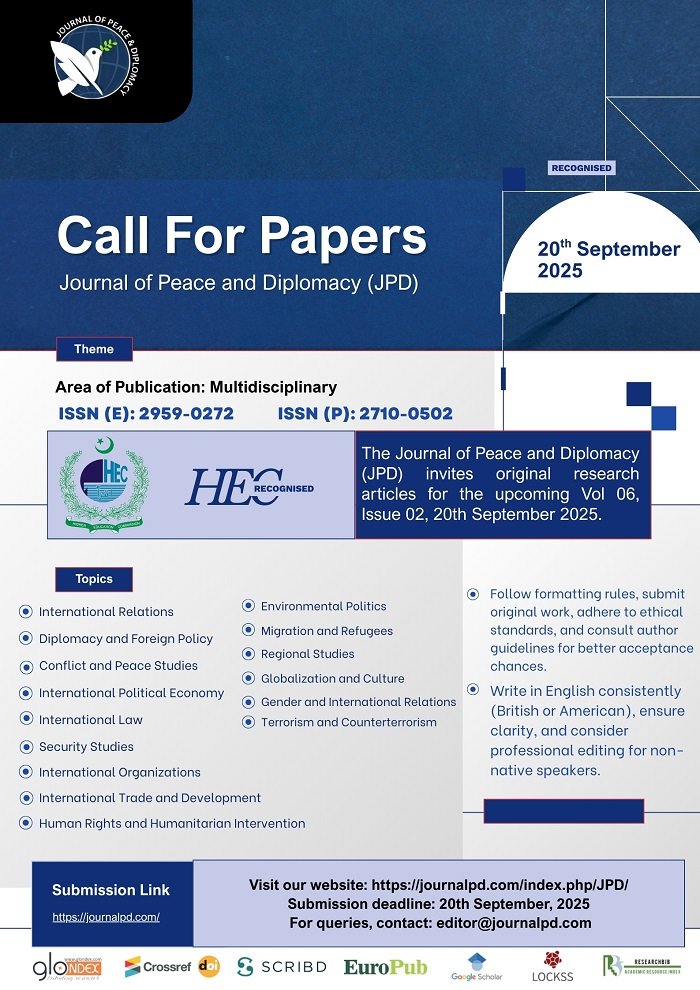Sino-Indian Strategic Competition in the Persian Gulf Region
DOI:
https://doi.org/10.59111/JPD.006.01.0126Keywords:
Sino-Indian Competition, Persian Gulf, Energy Security, Belt and Road Initiative, BRI, Link West Policy, Geopolitical Rivalry, Gulf States, Regional Stability, External ActorsAbstract
The strategic competition between China and India in the Persian Gulf region is driven by their growing energy needs, economic interests, and ambitions to expand their geopolitical influence. The Persian Gulf’s significance as a major source of oil and gas has made it a focal point for both countries’ foreign policies. China’s Belt and Road Initiative (BRI) has helped it establish a strong economic foothold through large-scale infrastructure investments and strategic partnerships, particularly with Iran. Meanwhile, India’s “Link West” policy has deepened its engagement with Gulf Cooperation Council (GCC) states like Saudi Arabia and the UAE, strengthening its economic and defense ties. The rivalry has extended from economic to military domains, with both countries seeking to secure their strategic interests and expand their regional presence. This competition also attracts the attention of external powers, including the United States and Russia, further complicating the Gulf’s security landscape. For Gulf States, the growing rivalry presents both opportunities and risks. While engaging with both China and India offers avenues for economic diversification and strategic partnerships, it could also lead to increased regional polarization and destabilization. This article outlines the dynamics of the Sino-Indian strategic competition in the Persian Gulf, its impact on regional stability, and the evolving geopolitical environment as both powers continue to expand their influence in this critical region.
Downloads
Published
How to Cite
Issue
Section
License
Copyright (c) 2025 Irfan Maqbool, Khalid Mahmood Awan, Mamoona Altaf , Maria Naheed

This work is licensed under a Creative Commons Attribution 4.0 International License.
Authors retain copyright and grant the journal right of first publication with the work simultaneously licensed under a Creative Commons Attribution (CC-BY) 4.0 License that allows others to share the work with an acknowledgment of the work’s authorship and initial publication in this journal.
















